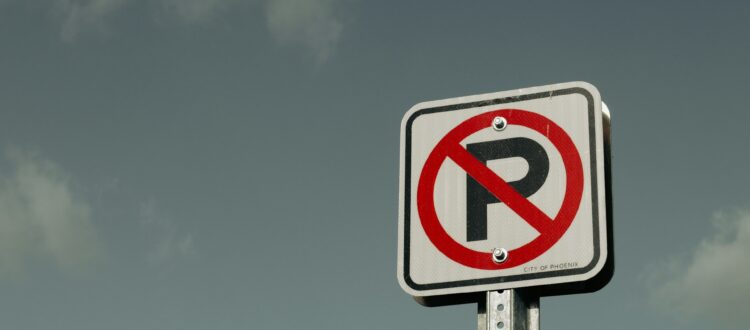The No Parking Road sign is a universal sight on streets and highways, serving as a clear and unmistakable directive to drivers that parking is prohibited in the designated area. Its bold red color, often accompanied by a striking symbol of a P inside a red circle with a red diagonal line across it, leaves no room for confusion.
These signs are strategically placed in areas where parking would obstruct traffic flow, jeopardize safety, or impede emergency vehicles. It plays a crucial role in maintaining order and safety on the roads, ensuring that vehicles do not hinder the smooth operation of traffic and emergency services. Understanding the significance of this sign is essential for all drivers to contribute to a well-functioning and safe road network.
What Material is a No Parking Road Sign Made of?
The No Parking Road sign is made of durable and weather-resistant materials to withstand outdoor conditions. Common materials used for these signs include aluminum, steel, or fiberglass. Aluminum is a popular choice due to its lightweight nature and resistance to corrosion, making it suitable for long-term outdoor use. Steel signs offer exceptional strength and durability, making them ideal for high-traffic areas or regions with harsh weather conditions.
Heavy-duty plastic signs are also utilized, especially in locations where weight and ease of installation are important factors. Regardless of the material used, these signs are designed to be highly visible, long-lasting, and capable of standing up to the elements, ensuring that the message of no parking is conveyed effectively and reliably.
Is a No Parking Road Sign Required to be MUTCD-Compliant?
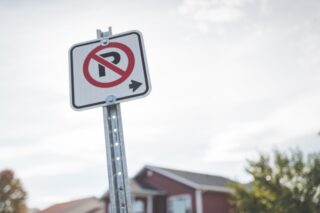 Yes, it is required to be MUTCD (Manual on Uniform Traffic Control Devices) compliant. The MUTCD sets the national standard for traffic control devices, including signs, signals, and pavement markings, to ensure uniformity and consistency across the country. Adhering to MUTCD guidelines is essential for traffic safety and regulatory compliance. The No Parking Road sign must meet specific size, color, and design requirements outlined in the MUTCD to effectively convey its message to drivers.
Yes, it is required to be MUTCD (Manual on Uniform Traffic Control Devices) compliant. The MUTCD sets the national standard for traffic control devices, including signs, signals, and pavement markings, to ensure uniformity and consistency across the country. Adhering to MUTCD guidelines is essential for traffic safety and regulatory compliance. The No Parking Road sign must meet specific size, color, and design requirements outlined in the MUTCD to effectively convey its message to drivers.
By following these standards, transportation authorities and road agencies can ensure that road signs, including No Parking signs, are easily recognizable, comprehensible, and consistent, contributing to the overall safety and efficiency of the transportation network.
What are the Rules on Reflectivity for No Parking Road Signs?
The rules on reflectivity for No Parking Road signs are designed to ensure that these signs are visible at night or in low-light conditions for road safety. The MUTCD has established minimum retro-reflectivity standards that must be adhered to for traffic signs, including No Parking signs, to be compliant. These standards have been developed to improve the nighttime visibility of traffic signs, which is crucial for maintaining safety and order on the roads. The retro-reflectivity of a sign is determined by the type of reflective sheeting used, with options ranging from engineering grade to high intensity prismatic (HIP), and the most reflective, diamond grade.
The FHWA has provided a table of minimum retro-reflectivity values, which includes specific criteria such as the coefficient of retroreflection for white-on-red signs. These values are essential for ensuring that signs remain effective and visible under various lighting conditions, and they apply to all roads open to public travel. It’s important to note that while some signs are exempt from retro-reflectivity standards, No Parking signs are not, and they must meet these requirements to facilitate proper traffic flow and adherence to local parking regulations.
What is advanced engineer grade reflective no parking signs?
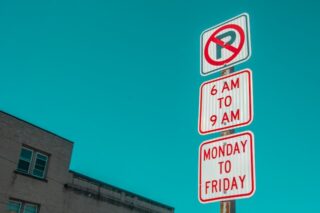 Advanced Engineer Grade Reflective (AEG) No Parking signs utilize a highly reflective material that enhances their visibility and legibility, especially at night or in low-light conditions. These signs are designed to meet the specific reflectivity standards outlined by the MUTCD, ensuring that they remain effective in conveying the message of no parking.
Advanced Engineer Grade Reflective (AEG) No Parking signs utilize a highly reflective material that enhances their visibility and legibility, especially at night or in low-light conditions. These signs are designed to meet the specific reflectivity standards outlined by the MUTCD, ensuring that they remain effective in conveying the message of no parking.
The advanced engineer grade reflective material used in these signs offers improved retroreflective properties, enhancing their performance and ensuring that they meet or exceed the required standards for traffic signs. By utilizing advanced engineer grade reflective material, these No Parking signs contribute to improved road safety and compliance with parking regulations, particularly in areas where visibility is crucial.
Are there Any Rules and Regulations in Putting Up a No Parking Road Sign?
Yes, there are specific rules and regulations governing the installation of No Parking road signs. These rules are aimed at ensuring the proper placement, visibility, and effectiveness of the signs in conveying the no parking message to drivers. The MUTCD provides guidelines for the location, height, and mounting of traffic signs, including No Parking signs, to ensure uniformity and consistency across road networks.
Also, local and state authorities may have their own regulations regarding the installation of traffic signs, including zoning requirements and permits for sign placement in specific areas. Adhering to these rules and regulations is crucial for maintaining traffic safety, consistent traffic control, and compliance with parking restrictions.
What is the Official Size of a No Parking Road Sign?
The most common official size is 12″ x 18″. These signs are commonly manufactured using engineer grade prismatic or high-intensity reflective aluminum material to ensure visibility and legibility, especially at night or in low-light conditions. The size and reflective properties of these signs are designed to meet the specific standards outlined by the MUTCD (Manual on Uniform Traffic Control Devices), ensuring that they effectively convey the message of no parking to drivers. Adhering to these official size and reflectivity standards is crucial for maintaining traffic safety, consistent traffic control, and compliance with parking regulations.
What is the Color of No Parking Road Sign?
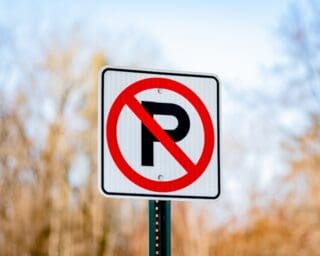 The most often-used color of No Parking is white with red lettering. This color scheme is designed to provide clear and easily recognizable visual cues to drivers, indicating the prohibition of parking in the specified area. The red background serves as a universal signal for stopping, emphasizing the restriction on parking in the designated zone.
The most often-used color of No Parking is white with red lettering. This color scheme is designed to provide clear and easily recognizable visual cues to drivers, indicating the prohibition of parking in the specified area. The red background serves as a universal signal for stopping, emphasizing the restriction on parking in the designated zone.
The use of colored lettering on the white background ensures high visibility and legibility, contributing to effective communication of the parking restriction to motorists. Adhering to this standard color scheme is essential for maintaining consistency and clarity in traffic control and parking regulations.
Many drivers temporarily park their vehicles to load and unload merchandise at the curb outside my property? Should I use a No Parking Road sign to discourage them?
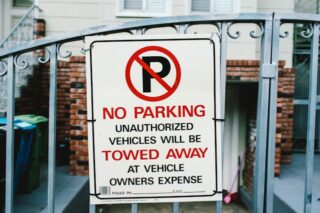 While it may be tempting to utilize a No Parking Road sign to deter drivers from stopping to load and unload goods outside your property, it’s important to consider the impact on the flow of traffic and the needs of businesses in the area. Instead of a No Parking sign, you might want to consider alternative solutions such as loading zone designations or time-limited parking restrictions to accommodate the legitimate need for short-term parking by delivery vehicles.
While it may be tempting to utilize a No Parking Road sign to deter drivers from stopping to load and unload goods outside your property, it’s important to consider the impact on the flow of traffic and the needs of businesses in the area. Instead of a No Parking sign, you might want to consider alternative solutions such as loading zone designations or time-limited parking restrictions to accommodate the legitimate need for short-term parking by delivery vehicles.
Working with local authorities and businesses to establish designated loading zones or implementing time-limited parking regulations could be more effective in addressing the issue while ensuring the smooth operation of traffic and supporting local commerce.
What Does a No Parking Road Sign with Arrows Mean?
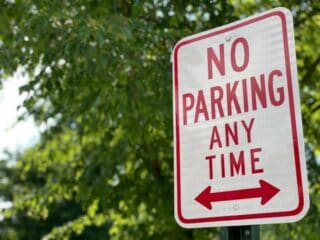 It actually indicates the specific area or direction to which the parking restriction applies. The arrows on the sign serve to precisely delineate the zone where parking is prohibited, ensuring that drivers understand the exact location affected by the restriction.
It actually indicates the specific area or direction to which the parking restriction applies. The arrows on the sign serve to precisely delineate the zone where parking is prohibited, ensuring that drivers understand the exact location affected by the restriction.
For example, if the sign displays a no parking symbol with arrows pointing to the right, it signifies that parking is prohibited on the right side of the sign in the direction indicated by the arrows. This helps to eliminate any ambiguity and clearly communicates the extent of the parking restriction to motorists, ensuring compliance with the designated regulations and contributing to the smooth flow of traffic in the area.
What Does a No Parking Road Sign Without Arrows Mean?
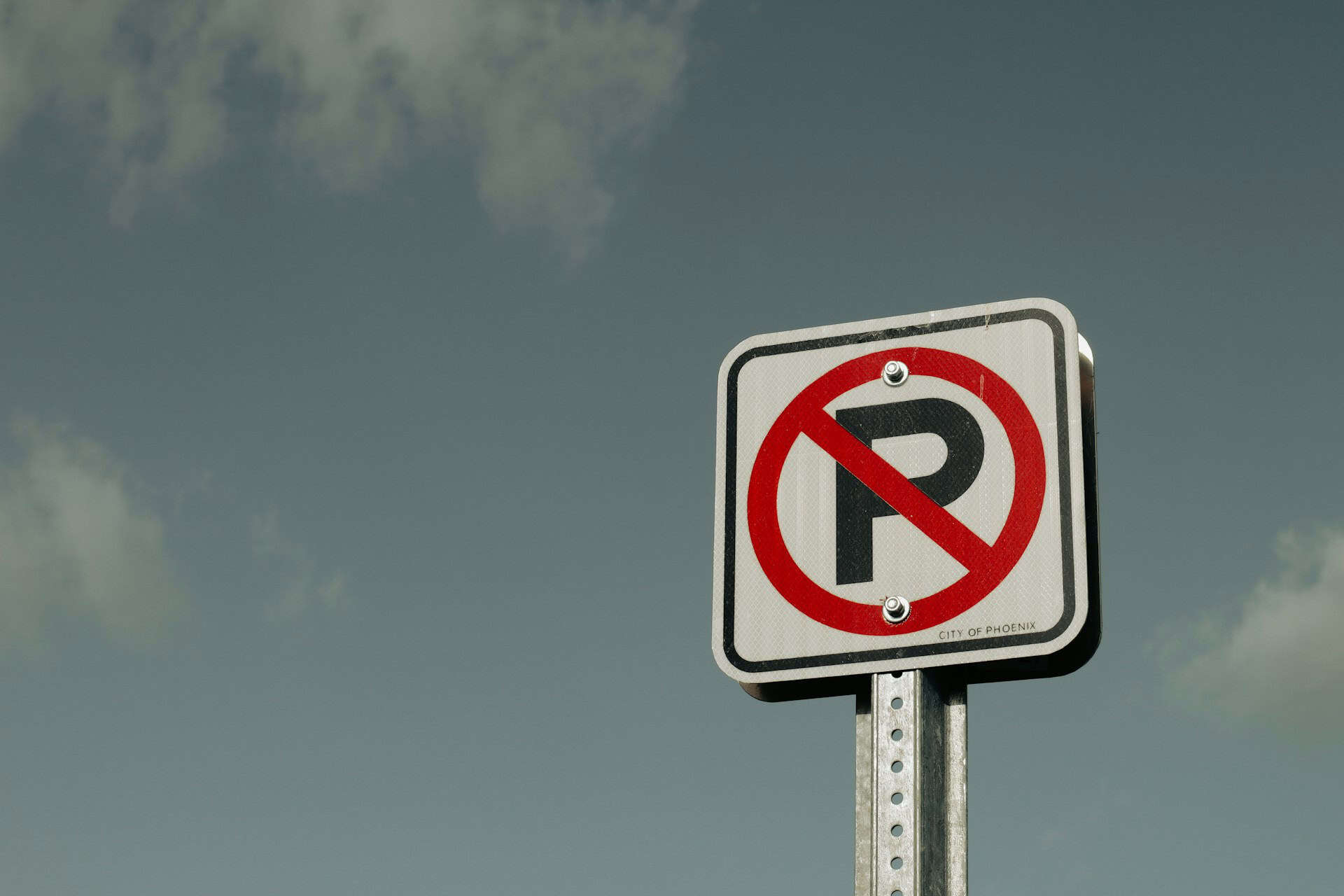 It often is a general prohibition on parking within the specified area or zone. This means that the parking restriction applies uniformly to the entire area where the sign is posted, without regard to a specific direction.
It often is a general prohibition on parking within the specified area or zone. This means that the parking restriction applies uniformly to the entire area where the sign is posted, without regard to a specific direction.
Drivers are expected to refrain from parking their vehicles anywhere within the vicinity of the sign, and the restriction is not limited to a particular side of the road or location. The absence of arrows on the sign conveys a blanket prohibition on parking in the designated area, providing clear and unambiguous guidance to motorists about the scope of the parking restriction.
I have painted my curb red to prohibit parking. Do I still need a No Parking Road Sign?
While painting the curb red is a proactive step to indicate a parking restriction, it’s still advisable to complement it with a No Parking Road sign. The presence of a sign reinforces the parking restriction and ensures that drivers are aware of the regulation, especially if they are unfamiliar with the area or the specific meaning of a red curb. Also, the sign provides clear and official notice of the parking prohibition, which can help avoid potential confusion or disputes. By combining the red curb with a No Parking Road sign, you can effectively communicate and enforce the parking restriction, promoting traffic safety and compliance with local ordinances.
How to Keep a No Parking Road Sign from Fading?
To prevent the sign from fading, regular maintenance and protective measures are essential. One approach is to apply a clear, protective coating specifically designed for traffic signs, which helps shield the sign from the detrimental effects of UV radiation, weather exposure, and other environmental factors. Also, utilizing high-quality, fade-resistant materials when manufacturing the sign can significantly prolong its lifespan and maintain visibility.
Routine inspections to identify signs of fading or damage, followed by prompt replacements as needed, are crucial for ensuring that the sign remains clearly visible and effectively communicates the parking restriction to motorists. Furthermore, placing the sign in a location that minimizes direct exposure to harsh sunlight and environmental elements can help mitigate fading over time, preserving its legibility and functionality.
Conclusion
The No Parking Road sign serves as a crucial tool for regulating parking and ensuring the smooth flow of traffic. Whether indicating specific restricted areas with or without arrows, or complementing other parking restrictions such as painted curbs, it plays a pivotal role in communicating clear and consistent messages to motorists. Whether used independently or in conjunction with other parking control measures, it stands as a visible and authoritative symbol of parking restrictions, contributing to the overall organization and safety of roadways.
Popular Posts:

